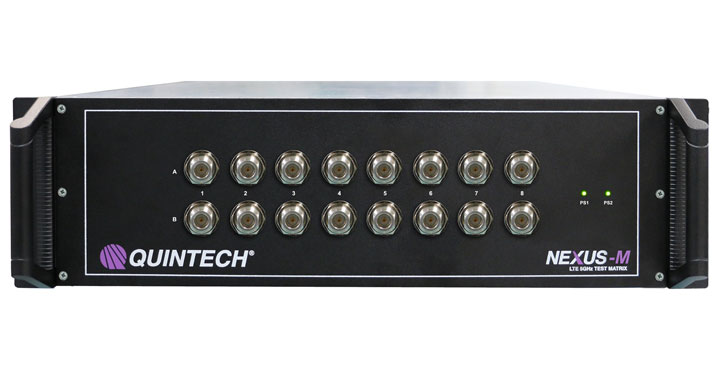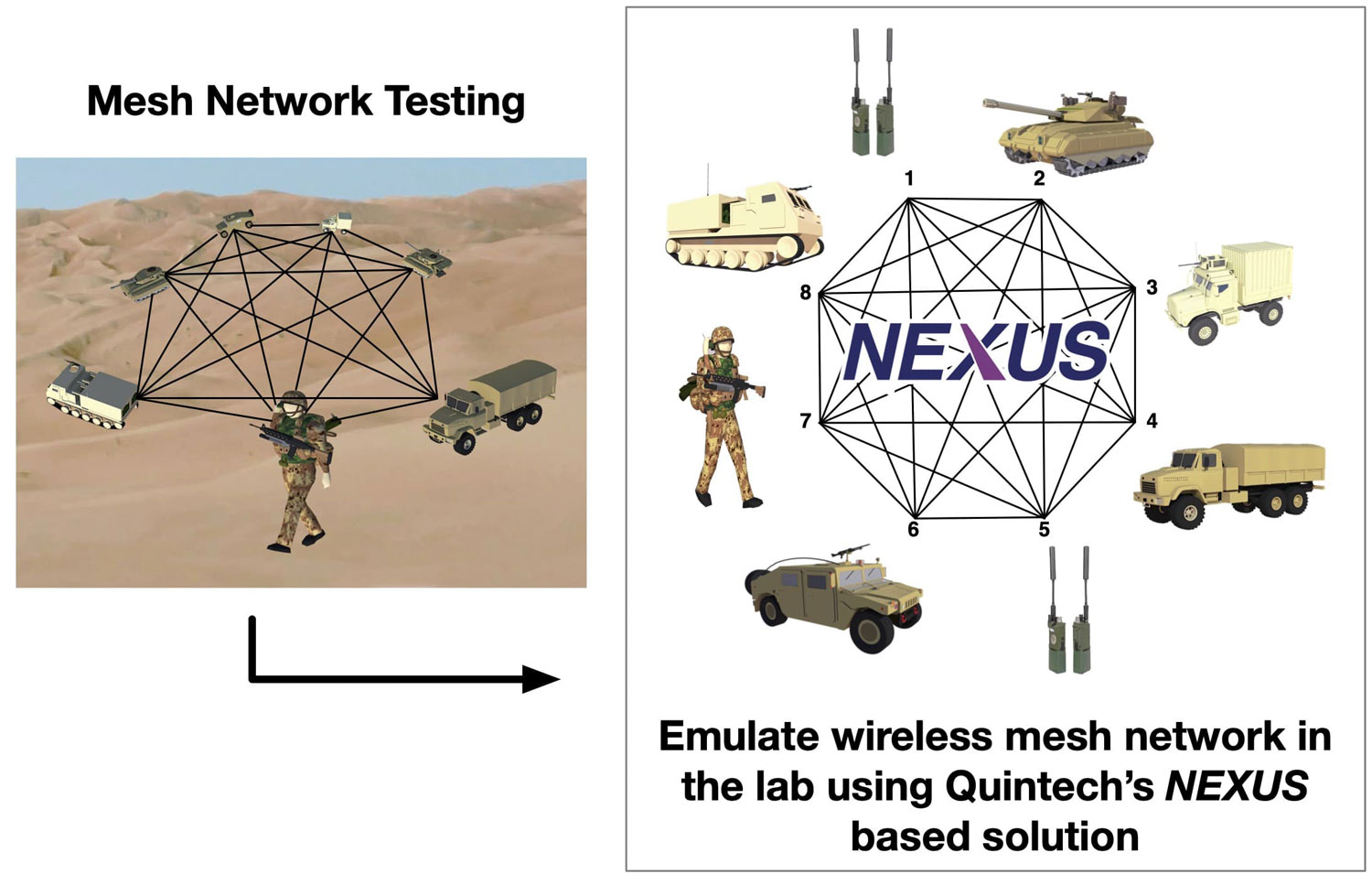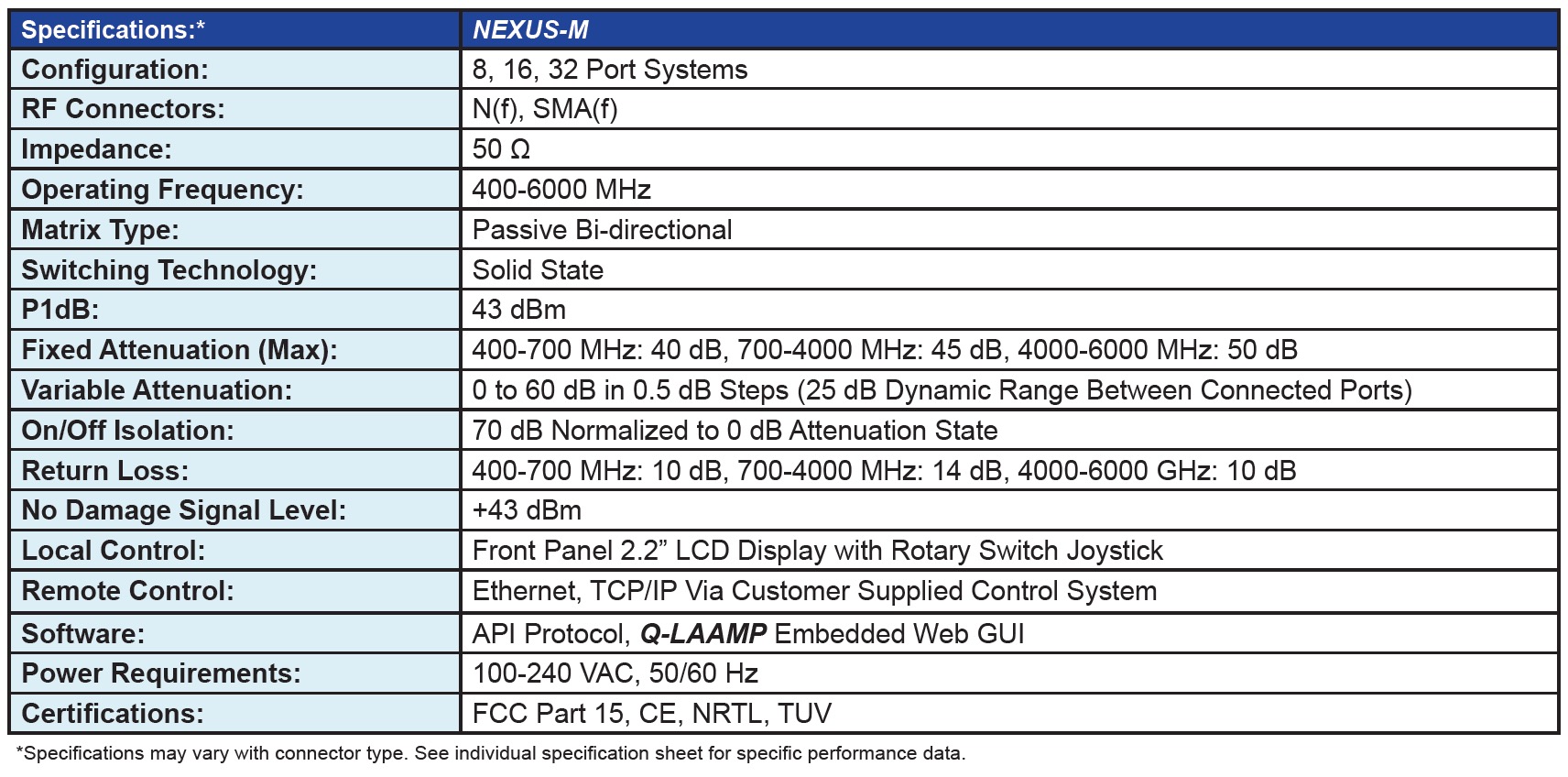
Mesh Network Test Solutions:
The NEXUS-M is a bi-directional 32 port mesh attenuator matrix where any port can connect to any or all remaining ports. With wideband frequency range spanning 400 MHz to 6 GHz, the matrix can be used for automating UHF, LTE, Bluetooth, WiFi, CAT-M, NB-IoT, and GPS component and software application tests. Each connection has an independently controlled variable attenuator, allowing power levels to be controlled between nodes. With millisecond switching speeds, software and firmware regression tests can be performed over many network configurations in a much shorter time compared to manual configuration of a patch panel. Easily configure string and mesh constellation networks for beam hopping latency measurements and network resiliency when adding or dropping nodes in software defined networks. The utilization of NEXUS-M RF mesh matrices will help reduce time to market of new hardware and software, and improve firmware compliance tests.
Features & Benefits
- 400-6000 MHz frequency range covering all major wireless technologies
- Available in 8, 16 or 32 port systems
- Solid state switching and attenuation for consistent and repeatable performance
- Emulate over-the-air incremental path loss
- Q-LAAMP management software enables resource and time allocation for lab operation efficiency
Applications
- Manpack Radios
- Accelerate SW/FW regression tests on multiple new and legacy SDRs and beam hopping network configurations.
- Verify ad hoc network continuity when nodes are added or subtracted.
- Rapidly configure specific network configurations in applications labs for customer demonstrations.
- Emulate multiple network configuration profiles to develop optimized network traffic management algorithms for low latency networks
- Accelerate SW/FW regression tests on multiple new and legacy access points (AP)/remote radio heads (RRH) and network configurations.
- Verify ad hoc network continuity when APs/RRHs are added or subtracted
- Rapidly configure specific network configurations in applications lab for customer demonstrations
- Laboratory performance verification of software defined radio (SDR) – Certify HW performance in a controlled environment of new SDRs prior to costly field trials
- Accelerate SW/FW regression tests on multiple new and legacy SDRs and beam hopping network configurations
- Verify ad hoc network continuity when nodes are added or subtracted
- Rapidly configure specific network configurations in applications lab for customer demonstrations
WiFi Mesh Networks
LEO Satellite Constellations



